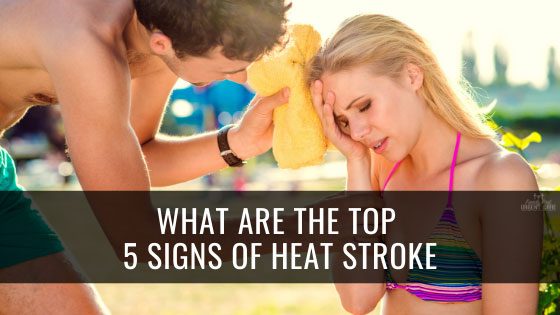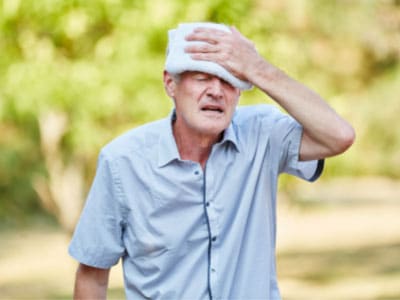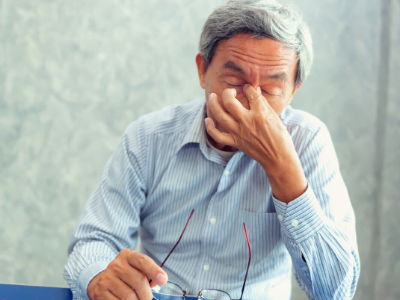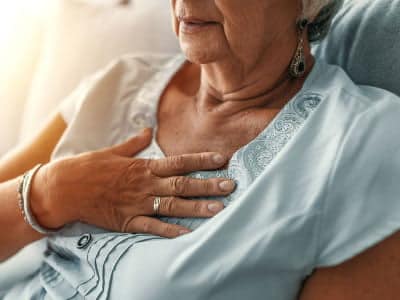
Houstonians are not strangers to the powerful Texas heat that typically arrives in late spring and can last well into the fall. July and August in the Lone Star State can bring particularly hot temperatures that prompt local weather forecasters to review the top 5 signs of heat stroke, often on a daily basis. By understanding how this condition happens and how to recognize the symptoms, people can be better prepared to take possibly life-saving action.
What Is Heat Stroke and What Causes It?
Heat stroke is a physical condition that can occur when a person becomes severely overheated and can cause various unpleasant symptoms, some of which may indicate a need for immediate medical attention.
This condition is typically caused by one of two scenarios:
- Being in a hot environment. Whether it is spending all day outside in a feels-like temperature of 115 degrees Fahrenheit or working a full day inside a hot factory or industrial plant, being in these environments like these for extended periods of time can be a primary contributing factor of developing heat stroke.
- Pushing your limits in extreme heat. Most people tend to think of this primarily as working in the heat, and while still accurate, it also applies to individuals participating in sports, spending time outside at a baseball game, swimming at the beach, etc. Even when a person is in top physical condition, doing what they normally do with ease can be much more dangerous in intense heat and humidity.

While these two scenarios can essentially affect people of any age, they can be particularly difficult for those who also:
- are advanced in age
- are already dehydrated
- live with a chronic illness
The Top 5 Signs of Heat Stroke
Every individual is unique, which means that their signs and symptoms of heat stroke may manifest differently. However, there are 5 signs of heat stroke that are commonly experienced by individuals, including:
- Raised body temperatures. This can look and feel differently than a fever associated with a bug of some sort. When an individual is experiencing heat stroke their body temperature is at or in excess of 104 degrees Fahrenheit. With a temperature this high, the skin can be visibly flushed.
- Throbbing headaches. Even a short time in the heat can leave some people with a headache. This is often associated with dehydration which can go unnoticed until symptoms like a headache begin to creep in. However, extended time in extreme heat can yield an intense, throbbing headache that is painful to the point that it may even cause feelings of nausea.
- Nausea or vomiting. Another primary sign of heat stroke in many individuals is nausea and vomiting. This can be the body’s response to simply being overheated, but it should be taken seriously. This can be a sign that things are quickly escalating and that medical help may soon be needed, and it could also be dangerous for an individual that is already dehydrated.
- Rapid breathing which can be accompanied by a higher heart rate. Being overheated can also yield a heightened state in the body’s response, causing breathing to become fast and sometimes shallow. This may be apparent in an individual who has trouble speaking a couple of sentences without constantly pausing for breath. In addition to rapid breathing, some people also experience a higher heart rate as the body tries to cool itself down.
- Unusual behavior or confused mental state. This symptom may be one of the most difficult to recognize in some individuals. It can range from simple confusion to slurred speech to seizures. If these symptoms are present, the patient may need urgent medical attention. If the person goes into seizures, emergency medical help should be called immediately.


If you suspect an individual is experiencing heat stroke, it is important to get them help quickly while keeping the patient as cool as possible. Help cool down a person experiencing heat stroke by:
- Moving the patient to a cooler location
- Getting rid of excess clothing
- Using cooling aids such as cool water via a sponge or rag on the patient’s neck and wrists
Heat Stroke and Urgent Care
It is critical that a person suspected to be experiencing heat stroke be observed and get medical help if symptoms don’t improve quickly. In cases where patients are more mildly affected, a visit to the local urgent care center may be appropriate. In the direst of cases, this may include calling emergency assistance at 911.
Unlike most doctor offices, urgent care centers are designed to treat individuals on a walk-in basis without an appointment. This gives more flexibility to patients who need urgent medical care beyond regular business hours. These centers are typically open past the normal close of business and also offer limited weekend hours.
If you or someone you know works or plays in extreme heat, it is critical to know the top 5 signs of heat stroke so that the necessary actions can be taken to protect the affected individual.
- The Dangers of Heat Stroke - August 2, 2022
- Health Devices and Supplies For Home - July 19, 2022
- Hydration for Houston’s Summer Heat - July 1, 2022



